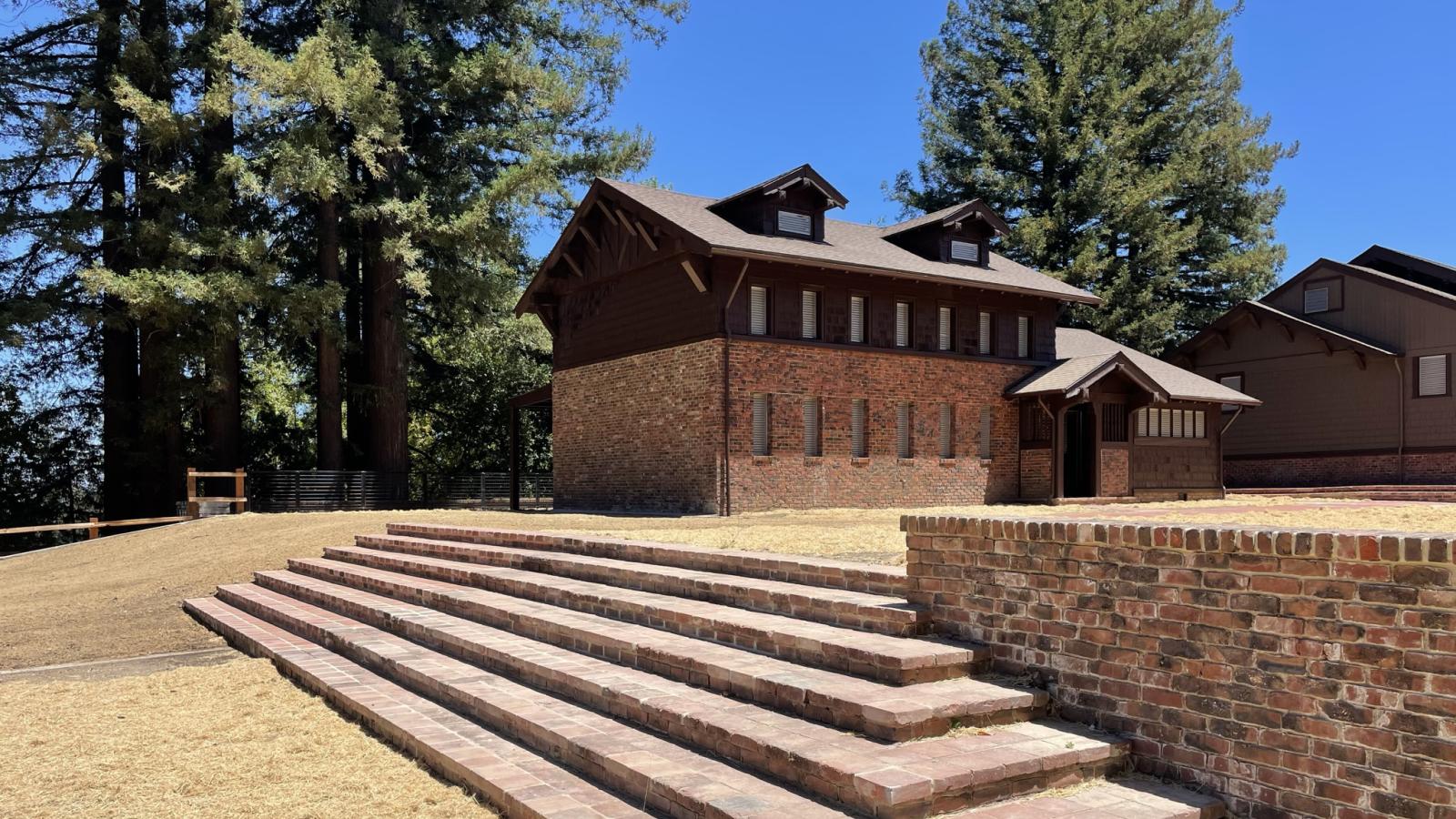New Area Highlighting Cultural History in Bear Creek Redwoods Open Space Preserve Now Open
Like all Midpen public lands, Bear Creek Redwoods Open Space Preserve has a long history of natural and human-led alterations. The landscape in this much-visited preserve, which opened to the public for the first time in 2019, has been shaped by earthquakes and forest streams, and also by many people including Native Californians, gold rush-era migrants, loggers, wealthy estate owners and even Jesuits who operated Alma College on the site from 1934 to 1969.
At this site, elements from each chapter of the preserve’s human history have been protected within a restored natural setting to provide history and habitat all in one. The project team rehabilitated certain Alma College structures, using reclaimed original redwood lumber salvaged from other dilapidated, and now removed, structures on the site. Original bricks were also salvaged and repurposed to recreate some of the terraced steps, and the architectural facade of an original library. The historic human activity on the property and its extensive development first as an estate and then as a Jesuit College resulted in the loss of native habitats and damage to the natural ecosystems. Seeking to restore the natural habitat values of the land, the project used native species in the landscapes to mimic the shape and feel of former nonnative historic plantings that were intentionally added to the property by previous landowners to establish elaborate gardens.
“Significant remediation efforts are necessary for public safety before opening the area to access,” said Midpen Senior Capital Project Manager Scott Reeves. “We have worked with care and intention to rehabilitate several buildings from the historic estate and Jesuit period, which help tell the land’s story.”
Visitors are able to walk through the landscape, view a 1909 chapel and 1934 library from the outside (there is no public access inside the buildings), as well as learn where other original buildings once stood. Interpretive signage throughout the site tells the natural and cultural history dating back thousands of years.

